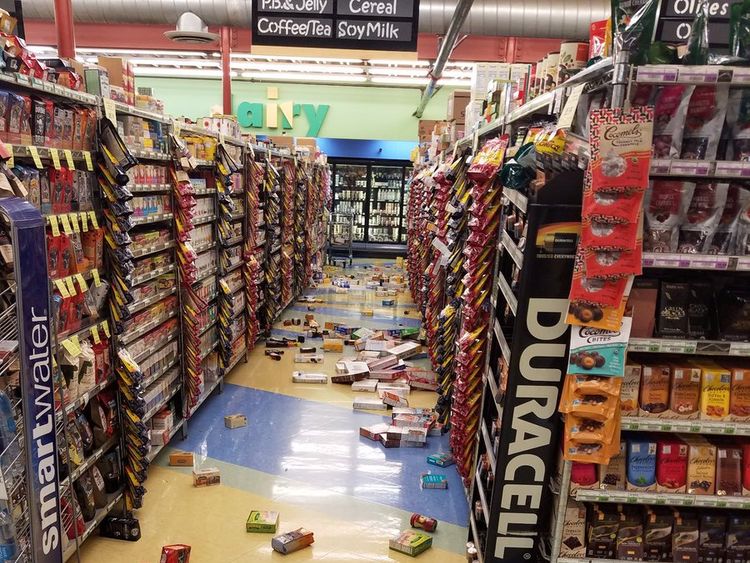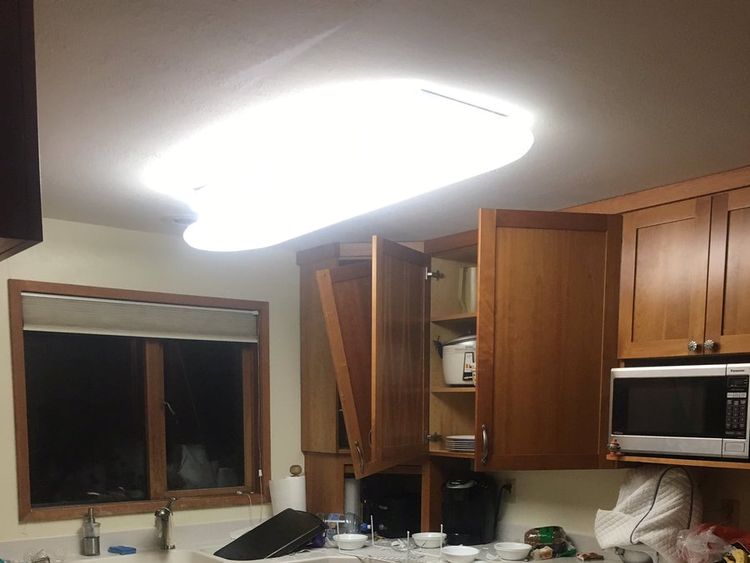As the earthquake hit, people ran out of buildings or sought shelter under office desks.
The US Geological Survey says the earthquake was centred around seven miles (12km) north of Alaska’s largest city, Anchorage.
People went back inside buildings after the earthquake but a smaller aftershock later sent them running back into the streets again.
There were no immediate reports of any deaths or serious injuries.
The National Tsunami Warning Centre issued a tsunami warning for coastal zones of southern Alaska following the quake in downtown Anchorage – but it has since been cancelled.
Police in Alaska’s Kodiak island community – about 200 miles (321km) south of Anchorage – told residents to head to higher ground amid the tsunami threat.
The Anchorage Police Department said they were operational after Friday’s “massive earthquake”.
In a statement, they said: “There is major infrastructure damage across Anchorage. Many homes and buildings are damaged.
“Many roads and bridges are closed. Stay off the roads if you don’t need to drive. Seek a safe shelter. Check on your surroundings and loved ones.”
A lawyer working and living in Anchorage, Hank Graper, said he was driving when the quake struck.
He realised it was an earthquake after he saw traffic poles swaying and called it the most “violent” quake he’s experience in his 20 years in the city.
Pictures posted to social media sites showed damage that included collapsed ceiling tiles at an Anchorage high school and buckled roadway pavement in places.
One photo shows a newsroom based in the city that felt the blow of the earthquake.
Another showed a car in the middle of a collapsed road.
Cereal boxes and packages of batteries littered the floor of a supermarket and picture frames and mirrors were knocked from living room walls.
Senior centre technician Michael Burgy said gauges were being monitored to determine if any underwater landslides generated tsunami waves. He said the warning would be cancelled if there weren’t any.
Alaska averages 40,000 earthquakes per year, with more large quakes than the other 49 states combined.
Southern Alaska has a high risk of earthquakes due to tectonic plates sliding past each other under the region.
On 27 March 1964, Alaska was hit by a magnitude 9.2 earthquake, the strongest recorded in US history.
It centred about 75 miles (120km) east of Anchorage and lasted about four-and-a-half minutes. The tsunami it triggered claimed about 130 lives.
More follows…
Source: Read Full Article

